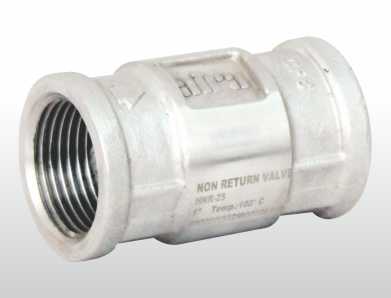What is a Non Return Valve and How Does it Work?
A non return valve, also known as a check valve, is a mechanical device that allows fluid to flow in only one direction. It is designed to prevent backflow or reverse flow of fluid, ensuring that the fluid flows in the desired direction only. non return valves come in various types, including ball check valves, swing check valves, lift check valves, and diaphragm check valves, among others. Each type operates differently, but they all share the same basic principle of preventing backflow.
Why are Non Return Valves Important in Fluid Systems?
non return valves play a critical role in fluid systems, especially those that transport fluids in a closed system. Without check valves, the fluid can flow back to its source, causing damage, contamination, or even system failure. For instance, in a water supply system, the backflow of contaminated water can cause health hazards, while in a hydraulic system, backflow can damage the equipment. Therefore, non return valve ensure the safety, efficiency, and reliability of fluid systems.
Where are Non Return Valves Used?
non return valves are used in various applications, including water supply systems, sewage systems, chemical processing plants, HVAC systems, oil and gas systems, and many more. In water supply systems, non return valves prevent the backflow of contaminated water into the mains. In HVAC systems, they prevent the reverse flow of refrigerant, which can damage the compressor. In chemical processing plants, non return valves prevent the mixing of incompatible chemicals, which can cause explosions or fires.
What Factors to Consider When Selecting a Non Return valve?
When selecting a non-return valve, there are several factors to consider, including the type of fluid, the flow rate, the pressure, the temperature, the installation orientation, and the maintenance requirements. The type of fluid determines the material of the valve, which can be plastic, brass, stainless steel, or other alloys. The flow rate and pressure determine the size and pressure rating of the valve. The temperature determines the material and sealing material of the valve. The installation orientation determines the type of valve, whether it is vertical, horizontal, or angled. Finally, the maintenance requirements determine the ease of cleaning, repairing, or replacement of the valve.
Conclusion:
In conclusion, non return valves are critical components in fluid systems that prevent backflow and ensure safety, efficiency, and reliability. Check valves come in various types, and their selection depends on various factors such as the type of fluid, the flow rate, the pressure, the temperature, the installation orientation, and the maintenance requirements. Proper selection, installation, and maintenance of non return valves can enhance the performance and lifespan of fluid systems.


